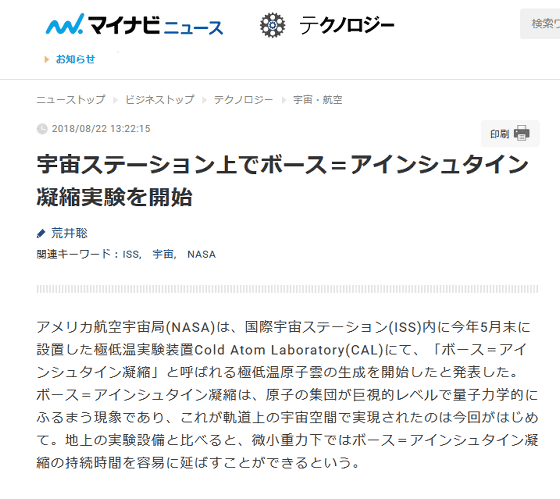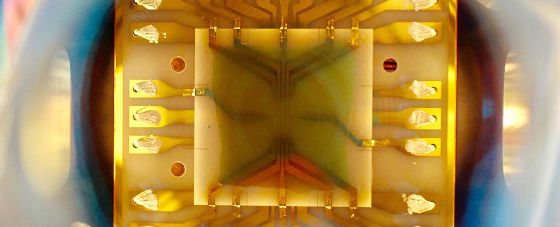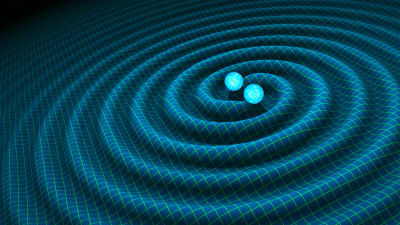Experiments are undertaken to observe atoms in 'the fifth state of matter' under microgravity

An experiment was conducted by a German team of researchers to place atoms in the fifth state " Bose-Einstein condensation " in an ultra-low temperature environment, which is only slightly above the absolute zero temperature, and observe its condition. In the experiment, a meteorological observation rocket which rises to an altitude of about 250 km is used, and more than 100 observations are carried out under a microgravity environment for about 6 minutes.
Space-borne Bose-Einstein condensation for precision interferometry | Nature
https://www.nature.com/articles/s41586-018-0605-1
For The First Time, Physicists Created a 'Fifth' State of Matter in Space
https://www.sciencealert.com/bose-einstein-condensate-space-record-maius-1-experiment-results
Bose-Einstein condensation ( BEC ) is considered to be the "fifth state of matter" next to an individual, liquid, gas, and plasma. In 1925, physicist Saty Endora Nat Bose and That existence was predicted by Albert Einstein. After that, in 1995, the research teams of Colorado University and Massachusetts Institute of Technology succeeded in realizing BEC, respectively, and in November 2001 they won the Nobel Prize in Physics.
The atoms in the BEC state will now show a behavior as collective waves rather than particle. In the state like this "cloud", many atoms are going to perform the same wave motion, and individual atoms can not be distinguished, so we think that the entire atom cloud is like one "super atom" It is done.
BEC is created by cooling the material to an absolutely zero degree as close as possible to zero by confining the oscillating motion of the atom in the "atom trap" created using a magnetic field or focused laser. However, even if you can create BEC on the ground affected by gravity, clouds will fall quickly and the state of BEC will be lost as soon as you stop the laser irradiation. For that purpose, in BEC research using the microgravity environment of the universe, in May 2018, apart from this research, NASA launched a test facility installed at the International Space Station (ISS) separately Inside BEC was being produced.
Bose-Einstein condensation experiment started on space station | My navigation news
https://news.mynavi.jp/article/20180822-682360/

The German team conducted an experiment to create more than 100 observations by creating BEC in outer space using a meteorological observation rocket and maintaining BEC over a "long time" of 6 minutes. In an experiment named "MAIUS 1 (Matter-Wave Interferometry in Microgravity experiment: interference of material wave in zero gravity state)", the rocket was launched from the Esrange Space Center in Kiruna in northern Sweden on January 23, 2017, By creating a ballistic flight at the highest point, we have created a microgravity environment.
Normally, it is necessary to use a facility that is as large as the room to produce BEC, but launching such a huge one is not efficient. The NASA mentioned above has also been downsized, and the facilities installed in the ISS have been downsized to a larger refrigerator size. The German research team developed a method to create BEC by forming a magnetic field on a small "atomic chip", confining multiple rubidium atoms in it and cooling it down to minus 273 degrees close to absolute zero .

Using the BEC made under a microgravity environment for 6 minutes, the research team conducted 110 measurements and observed how BEC behaves in a microgravity environment. Some of them said that BEC's "clipped" atomic clouds were "cut" and combined again. In that case, it is observed what kind of state the difference of the frequencies of both masses is, and it seems that it is expected that it will ultimately be reflected in improvement of gravitational wave detection technology .
Finally succeeded in observing the gravitational waves, possibility to expand the space research greatly by complementing the space observation by light - GIGAZINE

Related Posts:
in Science, Posted by darkhorse_log





